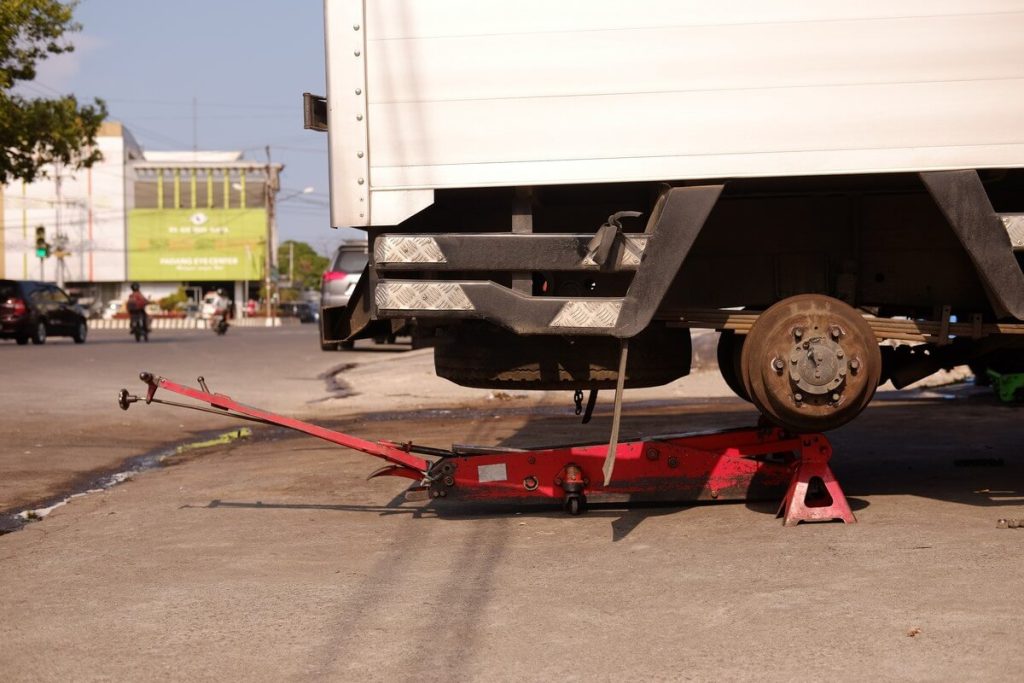Jacking up a truck safely is essential for various maintenance and repair tasks. Whether changing a tire or conducting undercarriage inspections, using correct techniques is paramount for personal safety and preventing damage to the vehicle. This article outlines safe truck jacking techniques to ensure a secure and stable work environment when performing maintenance procedures.
Follow these steps to elevate your truck securely and prepare for maintenance or repairs.Proper truck jacking is a fundamental skill for any vehicle owner or mechanic. It involves lifting the truck securely off the ground using hydraulic jacks or other lifting devices, allowing access to the undercarriage for repairs or maintenance. However, inadequate or incorrect jacking procedures can result in accidents or damage to the vehicle.

Mastering the correct technique to safely elevate and stabilize your truck before embarking on oil changes or repair work is essential for ensuring your safety. It’s crucial to understand that various vehicles have distinct support points, so begin by referring to the owner’s manual.
Ensuring the safety of your truck during the jacking process is of utmost importance. Acquiring the knowledge and skills to lift your truck safely and perform your own repairs and maintenance not only allows for cost savings but also promotes long-term well-being. To guarantee a safe and secure process, familiarize yourself with car jack safety guidelines.
Find a Level Surface Begin by parking your truck on a flat, even concrete surface. Pro Tip: If you’re working on an asphalt surface, utilize plywood support plates under the jack stands.
Understand Different Vehicle Constructions Trucks and most SUVs possess sturdy steel frames that provide structural support for the entire vehicle. Conversely, the majority of cars are constructed using a “unibody” design, lacking a separate frame. Consequently, each type of vehicle necessitates distinct support points for the proper placement of jacks and jack stands.
Refer to the Vehicle Manual For accurate guidance on the correct jacking procedure for your truck, refer to the vehicle’s repair manual to identify the recommended lift points and appropriate support locations. Repair manuals can typically be obtained from auto parts stores or online sources. Before initiating the jacking process, engage the parking brake and use wheel chocks at the rear to prevent any unintended movement.
Initiate Jacking from the Front Commence the jacking process from the front of the vehicle. For four-wheel-drive trucks, lift the front end by positioning the jack under the differential. Pro Tip: When dealing with two-wheel-drive trucks, place the jack under the designated jacking pad beneath the engine.
Lifting the Truck with the Jack Position the jack in a way that aligns the cross member or differential with the recessed section of the jack saddle. Gently pump the jack handle until the front wheels are off the ground, then pause to verify the jack’s placement. Inspect the front of the vehicle to ensure it remains level without leaning to either side. If there’s a lean, carefully lower and reposition the jack. If not, proceed to pump until the vehicle reaches the desired elevation.
Placing the Jack Stands Provide support for the front of the truck by positioning the jack stands directly under the frame. For the rear, position a jack stand under each axle. Gradually turn the handle until the vehicle begins to descend. Avoid a quick release, which could cause an abrupt and unsafe drop. Lower the truck until it’s nearly touching the saddle of the jack stand. Then, perform any necessary final adjustments before transferring the full weight onto the stand. Remove the floor jack and relocate it to the rear of the vehicle. Identify the designated rear lift point as indicated in the manual, and repeat the jacking process for the rear of the vehicle. Place the two rear jack stands in appropriate support positions and gently lower the rear onto these stands.
Verify the Stability of Support Points Once the vehicle is elevated on all four jack stands, carefully sway it from side to side and up and down. This step confirms that the vehicle is securely positioned on the jack stands and that the jack stand saddles are making complete contact with the designated support points. If any instability or wobbling is noticed, halt immediately and readjust the problematic jack stand before attempting to work underneath the vehicle.
Pro Tip: If you intend to remove the tires, slightly loosen the lug nuts while the truck is still on the ground. This precaution prevents the wheels from turning while using the lug wrench after the truck has been raised.
Verifying Stability: Before working under the truck, gently shake it to confirm that it is stable on the jack stands. Any wobbling or instability indicates a need for readjustment.
Preparing for Tire Removal: If planning to remove the tires, slightly loosen the lug nuts while the truck is on the ground. This will prevent the wheels from spinning when removing the tires after jacking.

Conclusion: Safe truck jacking is a crucial aspect of vehicle maintenance and repair. Adhering to proper techniques and safety precautions ensures a secure work environment, preventing accidents and damage to the vehicle. Always prioritize safety by using appropriate equipment and following the manufacturer’s recommendations for vehicle jacking.